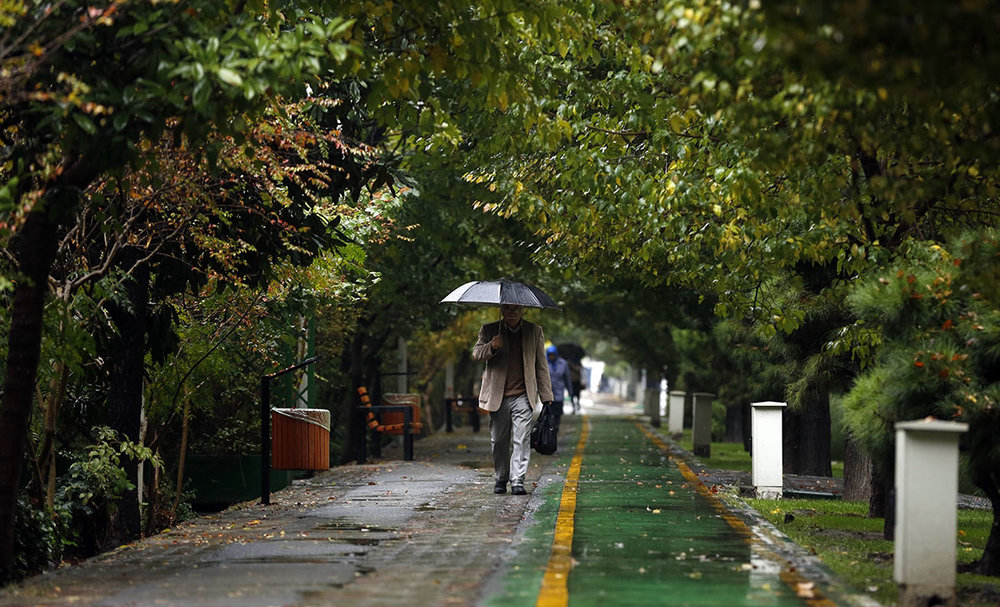Why Iran is facing decreased rainfall?

TEHRAN — It is all over the news in Iranian media. Iran is unprecedentedly suffering from low precipitation and experiencing a prolonged drought.
Deciding whether the use of the word “unprecedentedly” is scientifically accurate or not is not a job that can be done by the press. It certainly needs extensive, reliable geological and meteorological data to confirm the claims.
However, what Iranians are experiencing over the current winter, most significantly in provinces located in arid and semi-arid areas such as Isfahan, Tehran, Qom or South Khorasan is way different than winters of few years ago.
According to Iran’s meteorological organization Iran has experienced a 56-percent decrease in average precipitation over the period from September 23-December 25 compared to the same period in the long run. Moreover, nearly 96 percent of Iran’s total area is suffering from different levels of prolonged drought.
In regard to that taking counter-measures to alleviate the undesirable outcomes of low precipitation levels must be a top priority.
In an interview with Tasnim news agency Hassan Lashkari, a faculty member at the geology department of the Shahid Beheshti University, has explained that managing current water resources as well as application of scientific technology that can enhance clouds’ ability to produce precipitation, also known as cloud seeding, as methods of facing the current challenges of water shortage in the country.
Regional climate can affect Iran
Lashkari scientifically explained the reasons as to why Iran is facing tangible decreased rainfall.
He said that as per researches and recent findings climatic variables and the main pressure systems that affect the weather and climate of Saudi Arabia can affect rainfall over the region, as well as Iran, in the cold seasons. There are two patterns of pressure that influence the weather and climate of Saudi Arabia and Iran.
The direction of subtropical high in Saudi Arabia can play an important role in the precipitation levels in Iran, he said, adding, westward oscillation of subtropical high prevents interaction between air masses and leads to a decrease in the surface air temperature, relative humidity and rainfall over Saudi Arabia and also Iran, he noted.
The second pattern occurs when subtropical high moves towards Sea of Oman and east India. This pattern, Lashkari said, increases the surface air temperature, relative humidity and the probability of rainfall over Saudi Arabia as well as Iran.
Over the autumn, he stated, the first pattern has happened and resulted in diminished rainfall in Iran.
Air pollution, particles can’t reduce rainfall
Lashkari further said that air pollution and fine particles (PM 2.5) cannot cause decreased rainfall. In fact it’s quite the reverse, he said. Cloud droplets form when water vapor gas gathers onto tiny airborne particles called condensation nuclei. Fine particles can be condensation nuclei for raindrops to form.
That’s why rain can leave spotting from raindrops splashing against the windows and windshields, he highlighted.
HARP has nothing to do with decreased rainfall
Project HAARP, short for High Frequency Active Auroral Research Program, was originally developed was to analyze the ionosphere and investigate the potential for developing ionospheric enhancement technology for radio communications and surveillance.
Over the past few years, Lashkari said, due to lack of understanding and knowledge many have started baseless and unconfirmed rumors about the project potentials to cause draught in other parts of the world.
The U.S. is hit by giant and devastating hurricanes every now and then, he said, adding, if they had the power to control climatic conditions they would have certainly stopped them.
Cloud seeding is a viable option
Inquired about the possibility of increasing precipitation amounts in the country Lashkari explained that cloud seeding is a viable option that officials should seriously consider.
In a country like Iran cloud seeding can be very important, he highlighted, stating, regarding the fact that the country will face severe water shortage in the near future setting up a research center to implement cloud seeding must be high on agenda.
However, he added, Iran is located in an arid and semi-arid region and any hopes for high precipitation amounts is unrealistic, such climatic condition is the inevitable fate of the country.
So sustainable water management especially in agriculture sector is seriously important, he concluded.
MQ/MG
